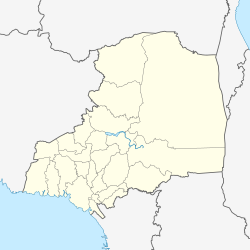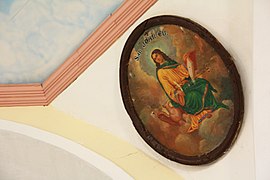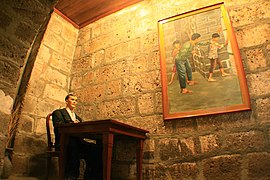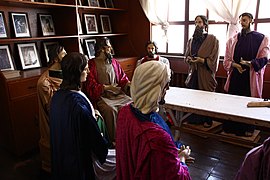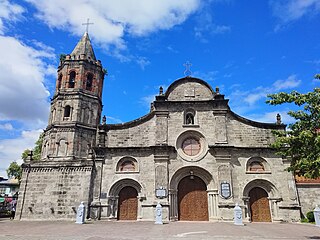
Bulacan, officially the Province of Bulacan, is a province in the Philippines located in the Central Luzon region. Its capital is the city of Malolos. Bulacan was established on August 15, 1578, and part of the Metro Luzon Urban Beltway Super Region.
Padre Dámaso Verdolagas is a fictional character in the novel Noli Me Tángere. The novel was written by José Rizal, one of the leaders of the Propaganda Movement in the Philippines. Noli Me Tángere is a controversial and anticlerical novel that exposed the abuses committed by the Spanish friars and the Spanish elite in colonial Philippines during the 19th century.
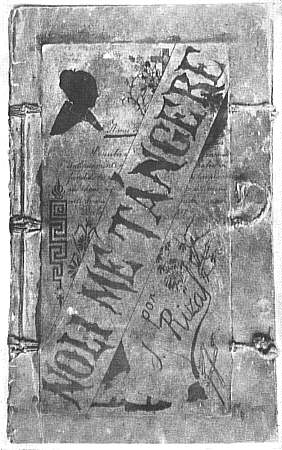
Noli Me Tángere is a novel by Filipino writer and activist José Rizal and was published during the Spanish colonial period of the Philippines. It explores perceived inequities in law and practice in terms of the treatment by the ruling government and the Spanish Catholic friars of the resident peoples in the late-19th century.

El filibusterismo, also known by its alternative English title The Reign of Greed, is the second novel written by Philippine national hero José Rizal. It is the sequel to Noli Me Tángere and, like the first book, was written in Spanish. It was first published in 1891 in Ghent.

Paete, officially the Municipality of Paete, is a 4th class municipality in the province of Laguna, Philippines. According to the 2020 census, it has a population of 24,945 people.

The Church of Saint Augustine, also known as the Archdiocesan Shrine of Our Lady of Consolation and Cincture or the Immaculate Conception Parish, is a Roman Catholic church under the auspices of the Order of Saint Augustine located inside the historic walled city of Intramuros in Manila, Philippines. Completed in 1607, it is the oldest stone church in the country.

Baliwag, officially the City of Baliwag, is a 1st class component city in the province of Bulacan, Philippines. According to the 2020 census, it has a population of 168,470 people.

The Obando Fertility Rites are a dance ritual, Anitist in origin, that later became a Catholic festival celebrated every May in Obando, Bulacan, Philippines. Locals and pilgrims, sometimes dressed in traditional costume, dance and sing in the town's streets to honour and beseech Obando's three patron saints: San Pascual, Santa Clara and Nuestra Señora de Salambáo.

Joaquín González was a Filipino politician and a member of the Malolos Congress that wrote the Malolos Constitution, the first Philippine constitution, after the country declared independence from Spain in 1898. He was one of two elected delegates representing the province of Pampanga, the other being José Rodríguez Infante. Along with Felipe Calderón y Roca, the main author of the constitution, Dr. González was on a committee that debated over each article of the charter from October 25 to November 29, 1898.
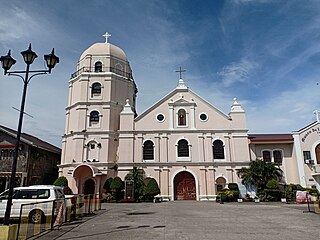
The Parish of San Pascual Baylon and National Shrine of Nuestra Señora Inmaculada Concepcion de Salambao(Filipino: Parokya ni San Pascual Baylon at Pambansang Dambana ng Nuestra Señora Inmaculada Concepcion de Salambao), commonly known as Obando Church, is a Roman Catholic church located in the municipality of Obando in the province of Bulacan, Philippines.

María Clara, whose full name is María Clara de los Santos y is a mestiza heroine in Noli Me Tángere, a novel by José Rizal, the national hero of the Philippines. Her name and character have since become a byword in Filipino culture for the traditional, feminine ideal.
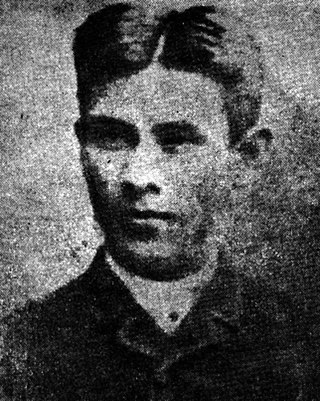
Máximo Viola y Sison was a propagandist, writer, revolutionary leader and doctor from Bulacan, Philippines.
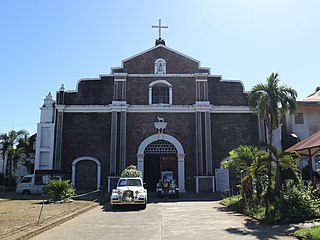
St. Andrew the Apostle Parish, commonly known as Bacarra Church is a Roman Catholic church located in the municipality of Bacarra, Ilocos Norte, Philippines under the jurisdiction of the Roman Catholic Diocese of Laoag.

The Santa Monica Parish Church is a Roman Catholic church and one of the oldest churches in the province of Bulacan, Philippines, dating back to 1758. It displays Baroque architectural characteristics and features ceiling paintings which resemble those in the Sistine Chapel.

The Diocesan Shrine and Parish of San Miguel Arcangel, is a 19th-century, Baroque Roman Catholic church located along De Leon St., Brgy. Poblacion, San Miguel, Bulacan, Philippines. The parish church, with Saint Michael, the Archangel as patron saint, is under the jurisdiction of the Roman Catholic Diocese of Malolos.
This is the timeline of the Philippine Revolution—the uprising that gave birth to Asia's first republic. The roots of the revolution trace back to the Cavite mutiny and subsequent execution of Gomburza in 1872, and ended with the declaration of independence from Spain in 1898.

The Battle of San Rafael fought between Filipino revolutionaries under the leadership of Anacleto “Matanglawin” Enriquez against the Spanish army headed by Commandant Lopez Arteaga.

Noli Me Tangere is an opera in 3 acts by Felipe Padilla de León with libretto by Guillermo Tolentino. The opera was closely based on a novel by José Rizal by the same name. The opera was sung entirely in Tagalog and is considered as the first full-length Filipino opera.
Philippines National Historic Landmarks is a registry of historic sites in the Philippines that have been officially declared by the Philippine Registry of Cultural Property.

Maria Clara at Ibarra is a Philippine television drama fantasy series broadcast by GMA Network. The series is based on the novels Noli Me Tángere and El Filibusterismo by José Rizal. Directed by Zig Dulay, it stars Barbie Forteza, Julie Anne San Jose and Dennis Trillo. It follows Klay Infantes, a Gen-Z nursing student who gets transported into the setting of Noli Me Tangere and El Filibusterismo.

